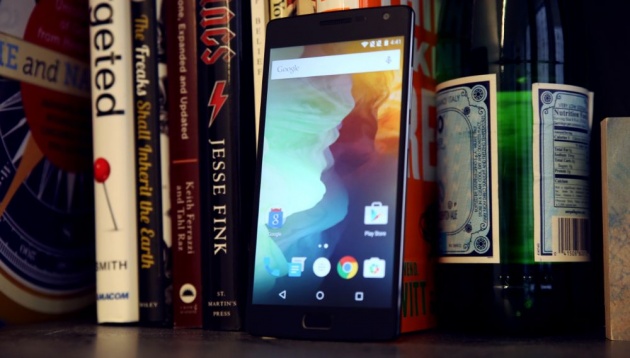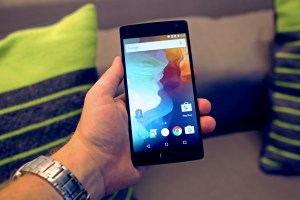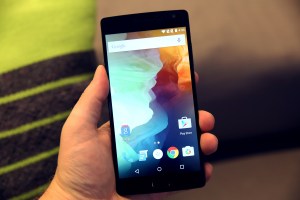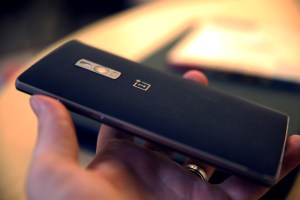
If you’ve been out of the Android game for a while you’d be hard-pressed to understand why people love OnePlus so much. These phones, conceived by the folks who initially launched Oppo, are aimed at the Android connoisseur, if such a person exists, and they have a rabid fanbase of folks who clamor for units with every launch. It’s hard to find them, you’ll probably never see one in the wild, yet they are some of the best Android devices I’ve used.
First, here’s what the OnePlus 2 isn’t. It’s not the thinnest phone out there nor the lightest. At $329 it’s not the cheapest. It’s not packed with features and apps like Samsung’s offerings. It a solid phone with 4 or 8GB of RAM and it doesn’t run like a tubgboat thanks to Qualcomm’s octa-core Snapdragon 810. It isn’t the same old same old. It runs Oxygen OS, a version of Android 5.1.1 with a few UI tweaks thrown in. It isn’t a low-res phone thanks to the bright and crisp 5.5-inch display with 1,920×1,080-pixel resolution. In fact, the screen is one of the best I’ve seen.
At its core, the OnePlus 2 phone is a worthy successor to the original phone with a slightly better camera and fingerprint sensor. In fact, it is so similar to the original that you’d wonder what exactly they changed. First, they dumped Cyanogen for pure Android and they’ve upped all the specs. The phone has dual SIM slots but no memory expansion slots and no removable battery. There are only three buttons on the phone – a large physical do-not-disturb switch, volume buttons, and a power button. A dark fingerprint reader sits below the screen and can be used to unlock the phone although the feature wasn’t quite usable in this build.
Using the phone reminds me, oddly, of the feature phones we used to buy from Samsung, LG, and the like. Because the phone is stripped to its core there is little distraction. Gone is the bloatware that most phone makers stuff onto their phones (“Verizon Flow App TV Powered By Dish Verizon Power Team,” “Fling By AT&T Powered By America’s Network AT&T Plus”) applications. The entire experience seems slightly alien – two SIM cards? A depressed fingerprint reader? A physical switch? – but also comfortable. Whereas most phones are like a warm bath of familiarity, OnePlus is whole-heartedly iconoclastic.
A few cool UI things: Oxygen offers some really interesting improvements to the standard Android experience. For example, you can double tap the phone to wake it up or draw a circle on the screen to launch the camera. It also has something called the Shelf which is a sort of homebrew Google Now/app launcher that is slightly baffling. Sadly, at this time, some apps won’t render correctly thanks to small differences between Android’s Material Design interface and Oxygen.
The battery, when not under heavy load, lasts about 48 hours on standby and about 9 hours of use. In fact I was able to keep it alive for about three days on standby, a notable happenstance, but your results may vary. Because you can’t swap the battery you’re stuck charging it every 24 hours or so via the USB-C cable – an odd but I suppose “futuristic” choice by the company. There is no NFC so you won’t be able to use Android Pay, another deal breaker for some.
Overall the experience is so fascinating that I’d honestly recommend this phone over, say, similar offerings from LG or HTC. But here’s the problem: it will be very hard to buy one of these phones in the wild. Because of OnePlus’ limited inventory and tendency towards forced scarcity, I doubt you’ll be able to get your hands one of these any time soon. You can grab them on Ebay for a $50 premium but the best way to grab one is via OnePlus’ invite system.
So here’s the rub: do you buy a Moto X for $299 unlocked or do you wait around for the OnePlus 2. If you’re a OnePlus fan the answer is obvious but if you’re not then there are many other options out there. It’s easiest to think of this phone as a box of rare artisan chocolates or a bottle of Pappy Van Winkle: aficionados will wait and hunt and crave while regular folks will buy some Godiva and Four Roses.
In the end the OnePlus 2 is a small product by a small manufacturer. OnePlus is a true hardware startup and is amazingly popular in certain circles. If you happen upon one and are looking to upgrade your Android phone then I’d honestly consider it a worthy contender. If you can’t find one – or don’t want spend the cash – then you can safely dismiss this. After all, there are plenty of other fish in the smartphone sea, from mysterious deep water creatures like this one to shining sprats from Motorola and Samsung. You just have to catch the right one.










